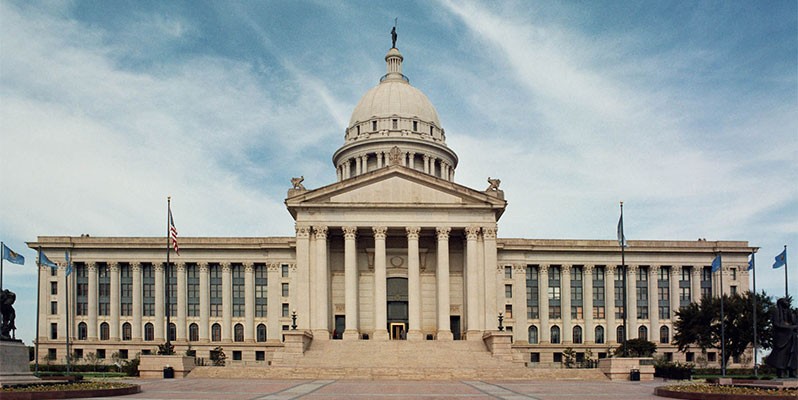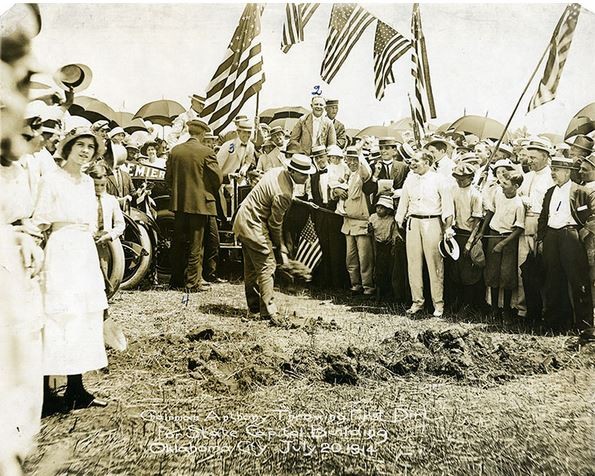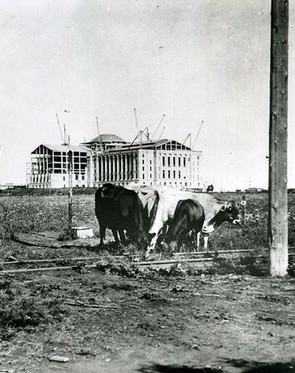Oklahoma State Capitol Building
Introduction
Text-to-speech Audio
Images
Oklahoma State Capitol (image from Oklahoma Arts Council)

Groundbreaking of the Capitol, 1914 (image from Oklahoma Historical Society)

Under Construction, 1916 (image from Oklahoma Historical Society)

Backstory and Context
Text-to-speech Audio
The capitol building (built 1915-1917)
was constructed on land donated by William F. Harn and John J. Culbertson, and
designed by the Layton and Smith Architectural Firm of Oklahoma City. Though
the six-story Beaux Arts style building was designed to support the weight of a
dome, the state decided not to include one due to the cost [4; 5]. The dome
present today was constructed in 2001-2002. The building houses the Capitol Art
Collection and the State Art Collection, which includes over 100 sculptures,
murals, and paintings, one of which is a twenty-two-foot bronze entitled The
Guardian by sculptor and state senator Enoch Kelly Haney [2].
Appropriately, given the state's
early economic reliance on the oil industry, the capitol is built atop an oil
well known as "Petunia Number One". During the 1920s through 1940s,
oil drilling pushed further and further into the heart of the city, perhaps in
part due to the economic hardships of the Great Depression and the Dust Bowl of
the 1930s. When the city council voted against drilling within the grounds of
the capitol building, Governor E.W. Marland declared martial law in order to
put in twenty-four oil wells, including Petunia Number One, which is angled
through a flowerbed to pull oil from directly under the Capitol Building itself
[3; 5].
Sources
2. Oklahoma Arts Council. "Oklahoma State Capitol Art Collection." Accessed October 12, 2017. http://www.arts.ok.gov/Art_at_the_Capitol/Capitol_Collection.php.
3. Oklahoma City History. "Historical Tidbits." Accessed October 12, 2017. http://okc-history.org/historical_tid_bits.html.
4. Oklahoma Historical Society. "Oklahoma State Capitol Groundbreaking." Accessed October 12, 2017. http://www.okhistory.org/research/capitol100.
5. Ruth, Kent. "Oklahoma State Capitol." National Park Service, National Register of Historic Places. February 1976. Accessed October 12, 2017.
